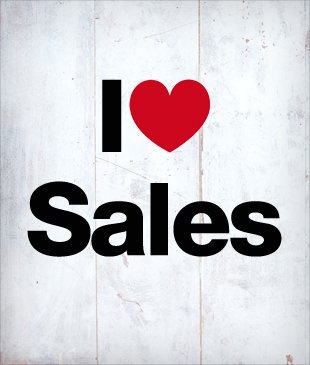In between that 90-sec video on the homepage introducing your product and a visitor actually signing up for a free trial, there is this glue that is required. The glue that helps visitors map the problems they are looking to solve to the features your product offers. Or the other way round. Back in time when men hunted for food and the web had animated star-shaped red-colored 50% OFF buttons all over, it was a lengthy page usually called Features. Today, when people are busier and the web richer, it has been replaced by what is called the Product Tour.
A product tour is an all-round summary of a product. An all-round summary because it has to bring out all aspects of your product but without going into details like how it allows the color of the error message to be changed from red to pink. It is a very important piece of your product literature, and I am going to talk about the best practices for creating a compelling product tour.
Sell benefits, not features
You have heard this a million times. Make it a million and one. But when it comes to a product tour, the importance of this point cannot be overstated. In fact, it is one the main differences between a deathly-dull-almost-useless feature list and a product tour. A feature list tells the visitor what a product can do, a product tour tells what the product can do for him.
Apple is a master at this, like at most things marketing. For the iPad, rather than listing out all the business features of iOS and the apps it comes along with, Apple just says how business users can be productive right from the start itself.

Write these benefits like you write tweets — simple and crisp, conveying just one point at a time.Mint does this really well with its product tour, a very important piece of literature for them given the sensitive nature of the product.

Make your benefits easier to understand with use cases. Don’t come up with problem-solution scenarios that everyone can directly relate to — they just don’t exist. Use scenarios 80% of your audience can relate to straightaway and let the others draw a parallel. It is better to hit the exact spot with a majority of your audience than try hit close to the spot for all of them. TheFusionCharts product tour, which I was a part of conceptualizing, uses examples in plenty to drive home benefits that would have taken otherwise taken multiple paragraphs.

Group similar benefits
Do not throw all the benefits of your product at once on your visitor’s face. It worked back in the day when the length of the feature list was as important as the features themselves but man has evolved now. Firstly, too much content overwhelms the visitors. These days, they digest it much better in bite-sized chunks. Secondly, for people interested in only a particular angle of the product, a page talking about that angle and around makes it much easier for them.
Freshbooks does this well by grouping benefits under simple action-driven heads.

Or you could group them in the sequential manner the product is going to be used in. With an email marketing tool like Campaign Monitor, a user will design the campaign first, then send it over and finally track its effectiveness, so that’s a good logical way of grouping the benefits.

Make it visual
Get your screenshots, diagrams and photos to do a bulk of the talking. Sure, copy is important and be sure to sum up your point really well in words but the visual is what will ultimately drive home the point. Also, visuals are much easier to scan through and remember.
FusionCharts, which is all about data visualization, has an open layout for the product tour and uses visuals in all shapes and sizes.

Get the visual to convey as much of the benefit as possible. If you can depict a complete use case with the visual, go ahead and do it. Don’t get Company A to work on Project 123 in the screenshot — use real data and real people, like Basecamp.

Do a complete roundup
Users don’t just buy a product, they buy a solution. Tell them what kind of documentation your product comes with. Do you also have demos that helps them get started quickly? What about tech support? MailChimp does this well in its tour.

Do you have an API for developers to create their own apps and add-ons? Is there a community developing them already? JIRA has a dedicated slide about add-ons.

And finally, it’s time to establish the credibility of your product.

Think your navigation through
Now that we are done talking about the content, let’s talk navigation. Where do visitors come to the tour from and where do they head out? What about the things in between? Since the product tour is a glue between attention and conversion, this is a very important piece of the puzzle.
Typically a visitor comes to the tour from the homepage or a landing page. Could the tour be used as a landing page by itself? After all, it sums up the product pretty well, doesn’t it? Unfortunately, there’s no clear answer for this. It depends on your product, the problem your visitors are looking to solve when they hit your website and the length of the tour itself. Just be sure to add the promise of your product right at the start of the tour if you decide to use it as a landing page, so the visitor has the right context before he takes a deep dive into the product.

What about linking to blog posts and videos for more information on a particular feature? Isn’t that a good addition? The products I have used as examples in the post are evenly divided on this question. MailChimp sprinkles links liberally throughout the content and after it.

Basecamp, on the other hand, keeps it all clean.

For me, internal links are not a good addition. The intent with the product tour is to give the visitor an all-round summary of the product and then send him packing to the free trial. Additional links only divert from the intended navigation flow.
If you have to have the deep dive resources, put them all together at the end of the tour. Interested people can check it out from there, and others can simply ignore it.
And now the final part. For product tours having multiple slides, more simply pages, what should you link to at the end of each slide? Rather what should you link to most prominently — the next slide or free trial signup? Again the thoughts on these are pretty mixed, but here’s what I consider best. The slides should have link to the next slide most prominently. Links to sign up for the free trial or register for the newsletter could be present but in lesser glory.

The idea is that if the visitor wants to spend more time understanding the product, let him do that before forcing him to sign up. For someone who figures your product will solve his pain point and wants to sign up immediately, he can always find that link from the main navigation or pick from where they are put out in lesser glory.
Over to you
Do you think the product tour as important as I make it out to be? What are other important considerations to keep in mind for a compelling product tour? Got good examples to share? Go for it.
[Helpful read: Behind the scenes of the FusionCharts product tour]































